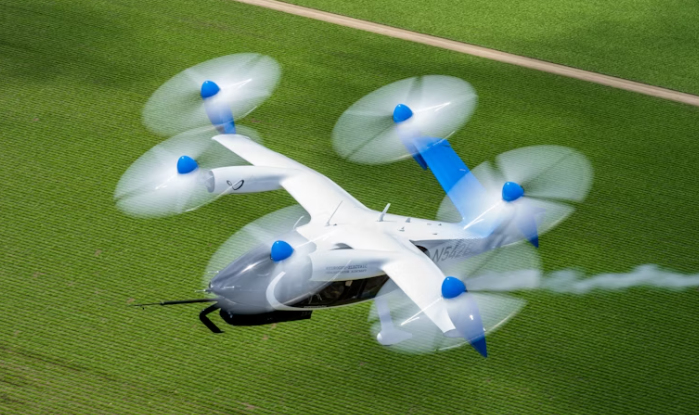
JoeBen Bevirt, Founder and CEO, Joby, said:, “Traveling by air is central to human progress, but we need to find ways to make it cleaner. With our battery-electric air taxi set to fundamentally change the way we move around cities, we’re excited to now be building a technology stack that could redefine regional travel using hydrogen-electric aircraft.
“Imagine being able to fly from San Francisco to San Diego, Boston to Baltimore, or Nashville to New Orleans without the need to go to an airport and with no emissions except water. That world is closer than ever, and the progress we’ve made towards certifying the battery-electric version of our aircraft gives us a great head start as we look ahead to making hydrogen-electric flight a reality.”
The landmark test flight, believed to be the first forward flight of a vertical takeoff and landing aircraft powered by liquid hydrogen, was completed last month using a converted Joby pre-production prototype battery-electric aircraft fitted with a liquid hydrogen fuel tank and fuel cell system. It landed with 10% of its hydrogen fuel load remaining.
“Clean hydrogen has the potential to help decarbonize our aviation system for decades to come,” said Principal Deputy Assistant Secretary for Energy Efficiency and Renewable Energy Jeff Marootian. “Regional air mobility innovation provides a clear opportunity to incorporate clean hydrogen into the future of transportation.”
Joby’s hydrogen-electric demonstrator is part of the Company’s future technology program and is the result of several years of collaboration between a small team at Joby and H2FLY, Joby’s wholly owned subsidiary based in Stuttgart, Germany. The converted aircraft previously completed more than 25,000 miles of testing as a battery-electric aircraft at Joby’s base in Marina, California.
Using the same airframe and overall architecture as Joby’s core, battery-electric aircraft, this demonstrator features a liquid hydrogen fuel tank, designed and built by Joby, which stores up to 40 kilograms of liquid hydrogen, alongside a reduced mass of batteries. Hydrogen is fed into a fuel cell system, designed and built by H2FLY, to produce electricity, water, and heat. The electricity produced by the hydrogen fuel cell powers the six electric motors on the Joby aircraft, with the batteries providing additional power primarily during take-off and landing.
Joby’s H2FLY team used similar technology to complete another record-breaking flight in September 2023, when they flew the world’s first piloted flight of a conventional liquid hydrogen-electric aircraft using their fuel cell technology.
Joby plans to start commercial operations as soon as 2025, using its battery-electric air taxi. The Company is listed on the New York Stock Exchange and has raised more than $2 billion of funding to date, including investments from Toyota, Delta Air Lines, SK Telecom, Uber and Baillie Gifford.
Related Posts

